#Best Framework for Responsive Web Design
Explore tagged Tumblr posts
Text
#Best CSS frameworks for developers#CSS frameworks for modern web apps#CSS frameworks for responsive design#Modern CSS frameworks 2025#Most popular CSS frameworks#Top CSS frameworks 2025#Top frontend frameworks 2025
0 notes
Text
Top Tools for Web Development in 2025
Web development is an ever-evolving field, requiring developers to stay updated with the latest tools, frameworks, and software. These tools not only enhance productivity but also simplify complex development processes. Whether you’re building a small business website or a complex web application, having the right tools in your toolkit can make all the difference. Here’s a rundown of the top…

View On WordPress
#Angular Framework#API Development Tools#Back-End Development Tools#Best Tools for Web Development 2024#Bootstrap for Responsive Design#Django Python Framework#Docker for Deployment#Front-End Development Tools#GitHub for Developers#Laravel PHP Framework#Modern Web Development Tools#Node.js Back-End Framework#Popular Web Development Software#React Development#Tailwind CSS#Testing and Debugging Tools#Vue.js for Web Development#Web Development Frameworks
0 notes
Text
Master Grid Layouts in Web Design: Achieving Design Consistency
Explore how grid layouts can enhance design consistency in web design. Learn the principles of responsive grid systems, best practices for layout design, and how to apply web design patterns for a cohesive user experience. Perfect for UX/UI designers aiming for a balanced and visually appealing website.
#Grid Layouts in Web Design#Design Consistency#Web Design Principles#Responsive Grid Systems#Layout Design Best Practices#Web Design Patterns#Consistent Design Frameworks#UX/UI Grid Layouts
0 notes
Text
Unleashing the Power of A2 Hosting Review: Hear Why Customers Are Raving

Introduction
Overview of A2 Hosting
When considering web hosting providers, A2 Hosting often comes up as a distinctive choice. Known for its speed and reliability, A2 Hosting caters to a diverse range of users—from bloggers to large enterprises. Their commitment to performance is backed by a suite of features designed to offer not just hosting, but a robust online experience. What sets A2 Hosting apart? Let me simplify it for you:
Turbo Servers: Up to 20x faster than standard hosting
Developer-Friendly: Supports various programming languages and frameworks
Green Hosting: Environmentally responsible with energy-efficient practices
Using A2 Hosting has truly allowed me to focus on what I love—creating content—without the worries of server downtimes.
History of A2 Hosting
Founded in 2001, A2 Hosting began with a clear mission: to provide a top-tier web hosting experience. What started as a small startup has evolved into a significant player in the hosting industry over the years. Here are some pivotal milestones in A2 Hosting's journey:
2001: A2 Hosting was established in Ann Arbor, Michigan, mainly targeting developers.
2003: The introduction of their "Turbo" server line showcased their focus on speed.
2013: The launch of their Managed WordPress hosting solidified their offerings.

A2 Hosting Features
High-Speed Servers
One of the standout features of A2 Hosting is its high-speed servers. Speed is crucial, especially if you want to provide users with a seamless experience. When I first migrated my blog to A2 Hosting, I noticed an immediate boost in page loading times. Their Turbo Servers promise up to 20x faster performance, which is a game changer! Here are a few highlights about their speed capabilities:
SSD Storage: A2 utilizes solid-state drives that drastically improve data retrieval times compared to traditional HDDs.
Turbo Boost: This optional feature allows for even faster speeds by optimizing server settings specifically for your site.
Global Data Centers: With multiple data centers across the globe, A2 Hosting ensures that your content is as close to your visitors as possible.
Reliable Customer Support
Another noteworthy aspect of A2 Hosting is their reliable customer support. We all encounter technical hiccups from time to time, and having a responsive support team can make all the difference. Personally, I found their customer service representatives to be knowledgeable and eager to help with any questions I had during my initial setup. Here’s what you can expect from their support services:
24/7 Availability: Whether it’s the weekend or the middle of the night, help is just a click away.
Multiple Support Channels: Reach out via live chat, phone, or email—whichever method suits you best.
Comprehensive Knowledge Base: A detailed library of articles and tutorials helps users find answers swiftly.

A2 Hosting Plans
Shared Hosting
When it comes to affordability and ease of use, A2 Hosting's Shared Hosting plans are a fantastic option, especially for beginners. I still remember my initial foray into web hosting; I started with a shared plan simply because it fit my budget and needs perfectly. With shared hosting, multiple websites share the same server resources, which is both cost-effective and simple to manage. Here are some key features of A2 Hosting's Shared Hosting:
Low Starting Price: Their plans are competitively priced, making it accessible to many.
Free Site Migration: A2 offers migration assistance from your existing host, saving you the hassle.
Unlimited Storage and Bandwidth: Ideal for growing websites that may need more resources as they scale.
VPS Hosting
As my website grew, I found myself needing more control and resources, leading me to explore A2 Hosting's VPS Hosting options. Virtual Private Servers offer dedicated resources within a shared environment, providing better performance and greater customization. Here's what I discovered about their VPS Hosting plans:
Flexible Resources: You can scale your resources according to your site's evolving needs.
Root Access: Ideal for developers like me who want complete control over their server's configurations.
Enhanced Security: A private environment adds an extra layer of security for sensitive data.

Benefits of Using A2 Hosting
Enhanced Security
One of the aspects of A2 Hosting that truly stood out for me is their enhanced security features. In today’s digital landscape, safeguarding your website is crucial, and A2 Hosting takes this concern seriously. From the moment I started my journey with them, I felt reassured by the various security measures they implemented. Here are some highlights of their security features:
Free SSL Certificates: A2 provides free SSL certificates, which are essential for encrypting data and boosting customer trust.
HackScan Protection: Their proactive monitoring helps detect vulnerabilities and block potential threats before they cause harm.
Reinforced DDoS Protection: This feature safeguards your website from malicious attacks that could disrupt services.
Knowing these measures were in place allowed me to focus on my content without constantly worrying about potential breaches.
User-Friendly Control Panel
Navigating the world of web hosting can be intimidating, especially if you’re new to it. That’s why A2 Hosting’s user-friendly control panel is yet another reason I appreciate their service. It simplifies website management, making it accessible to everyone, regardless of technical expertise. What I love about their control panel:
Intuitive Design: Easy-to-navigate menus mean you can quickly find what you need.
One-Click Installations: Setting up applications like WordPress or Joomla is a breeze with just one click.
Resource Usage Stats: You can easily monitor your resource consumption, helping to manage your site effectively.

Customer Reviews
Positive Feedback
As I dove deeper into the world of A2 Hosting, I couldn't help but notice the buzz surrounding their services. Many users rave about the performance and overall experience they receive. The positive feedback is nearly unanimous, emphasizing how this hosting provider sets itself apart from the competition. Here’s what many customers appreciate most:
Speed and Uptime: A consistent theme in reviews is the impressive speed and reliability. Users often mention page load times significantly improving after switching to A2 Hosting.
Responsive Support: Customers frequently highlight the quick response time and helpfulness of the support team—something I can personally attest to. I reached out to them once, and I was amazed at how quickly I received a thorough solution.
Testimonials from Satisfied Customers
Real-life testimonials often speak volumes, and A2 Hosting is filled with success stories from satisfied customers. Many express how transitioning to A2 Hosting transformed their online presence. For instance:
John, a Small Business Owner: Sharing his journey, John mentioned that after moving to A2 Hosting, his e-commerce site experienced record sales due to faster page load times, which directly bolstered customer satisfaction.
Sarah, a Blogger: Sarah remarked, "The user-friendly control panel took the headache out of managing my blog. It's simplified everything for me!"
In my experience, witnessing such genuine testimonials gives me confidence in A2 Hosting. Their customers not only praise the services but feel genuinely looked after, and that’s something we all want when selecting our web hosting partner.
#web hosting#vps hosting#hosting services#hosting service provider#cybersecurity#web development#web design#computer#internet#technology
4 notes
·
View notes
Text
Spacing and Sizing in Web Design 📐✨
Understanding spacing and sizing is crucial for creating an intuitive and visually appealing web design. Let’s break it down!
1. What is Spacing?
Margin: The space outside an element. It controls how far apart elements are from each other.
Padding: The space inside an element. It affects the space between the content and the element’s border.
2. Why is Spacing Important?
Readability: Adequate spacing improves text readability and overall user experience.
Hierarchy: Proper spacing can help establish a visual hierarchy, guiding users’ attention to important elements.
Aesthetics: Well-spaced designs look cleaner and more professional.
3. Sizing Elements
Fixed Sizes: Set dimensions that won’t change regardless of the viewport (e.g., width: 200px;).
Fluid Sizes: Use percentages or viewport units (e.g., width: 50%;) for a responsive design that adapts to different screen sizes.
Responsive Design: Combine fixed and fluid sizing with media queries to ensure elements resize appropriately on various devices.
4. The Role of Interior Spacing
Example: Buttons: The size of a button is influenced by both its width/height and its padding. A button with too little padding may look cramped, while excessive padding can make it appear too large.
5. Best Practices for Spacing and Sizing
Consistent Units: Use consistent units (like rem or em) to maintain scalability across your design.
Grid Systems: Implement a grid layout for balanced spacing and sizing, making the design more predictable and user-friendly.
Whitespace: Don’t underestimate the power of whitespace; it enhances focus and reduces clutter.
6. Testing and Iteration
Regularly test your designs on various devices to ensure spacing and sizing work well in all contexts.
Gather feedback from users to identify areas needing adjustments.
Quick Tips:
Aim for a harmonious balance between spacing and sizing.
Use design tools or frameworks that offer predefined spacing/sizing options.
Be mindful of touch targets; ensure buttons and links are large enough for easy interaction.
Mastering spacing and sizing will elevate your web design, making it more functional and visually appealing! 🌟
----------
What marketing strategies are you excited to try this year? Let’s share ideas and inspire each other! Visit Our Web Design Blog!
5 notes
·
View notes
Text
Page Optimization Best Practices: A Blueprint for Online Growth
Page optimization is an essential system in virtual advertising and net development that ensures websites are person-friendly, functional, and aligned with seek engine tips. It encompasses quite a few techniques and practices aimed at improving a website's performance, visibility, and general user revel in (UX). By optimizing a page, companies and content creators can achieve better search engine ratings, force organic visitors, and ultimately enhance conversion costs. This complete manual explores the facets of page optimization, from its technical factors to consumer-centered techniques.

On-Page Optimization
The Importance of Page Optimization
In the state-of-the-art competitive digital landscape, merely having an internet site is inadequate. Users anticipate rapid-loading, cellular-friendly, and easily navigable pages. Moreover, serps like Google prioritize web sites that supply value through optimized overall performance. Here’s why page optimization is essential:
Enhanced User Experience: Optimized pages load quickly, are visually appealing and provide intuitive navigation. This maintains users engaged and decreases bounce costs.
Higher Search Engine Rankings: Search engines reward optimized pages with better ratings, growing visibility, and natural reach.
Increased Conversions: A properly optimized web page encourages customers to take desired movements, including creating a purchase, signing up for a publication, or downloading content.
Better Accessibility: Optimization guarantees your content is on the market to all customers, such as people with disabilities, through features like alt textual content and proper structure.
Cost Efficiency: Pages optimized for speed and overall performance lessen server load and bandwidth utilization, reducing hosting expenses.
Key Elements of Page Optimization
Page optimization is multi-faceted, involving each technical and content-associated components. Below, we delve into its middle elements:
Page Speed Optimization
Page speed refers to how quickly a webpage masses its content. It's a crucial rating issue for search engines like Google and Yahoo and significantly affects consumer retention. A postponement of even a 2nd can bring about massive drops in personal engagement and conversions.
Minimize HTTP Requests: Reduce the number of factors like photographs, scripts, and CSS documents.
Compress Images: Use equipment like TinyPNG or ImageOptim to lessen image sizes without compromising quality.
Enable Browser Caching: Cache static files so returning site visitors don’t need to reload all factors.
Use a Content Delivery Network (CDN): Distribute content across more than one server to reduce latency.
Optimize Code: Minify CSS, JavaScript, and HTML to put off unnecessary characters.
Mobile-Friendliness
With over half of internet traffic coming from cellular gadgets, ensuring a web page is cell-pleasant is non-negotiable.
Responsive Design: Use CSS frameworks like Bootstrap to ensure the page adapts to specific screen sizes.
Viewport Settings: Define the viewport for your HTML to govern how your website is displayed on cell devices.
Clickable Elements: Ensure buttons and hyperlinks are properly sized and spaced for touchscreens.
Content Optimization
Content is at the heart of any website. Optimizing content for relevance, readability, and engagement is crucial.
Keyword Research: Identify and use goal key phrases naturally in your content.
Structured Data: Use schema markup to help serps recognize your content material.
Readability: Use brief paragraphs, subheadings, and bullet points to make content material scannable.
Engaging Visuals: Incorporate great images, movies, and infographics to complement textual content.
On-page search engine marketing
On-page search engine marketing entails optimizing character internet pages to rank better in seek engine results.
Title Tags: Create compelling and keyword-rich titles within 50-60 characters.
Meta Descriptions: Write concise descriptions that summarize the page content material and consist of target keywords.
Header Tags (H1, H2, and so forth.): Use headers to shape content material logically and improve readability.
Internal Linking: Link to different applicable pages in your website to enhance navigation and search engine optimization.
Technical Optimization
Technical optimization makes a specialty of backend upgrades to beautify overall performance and seek engine crawlability.
Robots.Txt File: Guide engines like Google on which pages to crawl or ignore.
Canonical Tags: Avoid duplicate content material problems by specifying the favored version of a website.
SSL Certificate: Secure your website online with HTTPS to reinforce consideration and ratings.
404 Error Pages: Create consumer-friendly error pages to guide users to lower back to practical parts of your website online.
Tools for Page Optimization
Several tools can simplify and streamline the optimization manner:
Google PageSpeed Insights: Analyzes web page speed and affords actionable guidelines.
GTmetrix: Offers insights into website performance and areas for development.
Ahrefs/Semrush: Helps with keyword studies, content optimization, and search engine marketing monitoring.
Hotjar: Tracks user behavior via heatmaps and session recordings.
Strategies for Effective Page Optimization
To reap meaningful effects, you want a well-rounded strategy. Here’s a step-by-step approach:
Conduct an Audit
Before enforcing modifications, conduct a comprehensive audit to identify existing troubles. Tools like Screaming Frog or Google Analytics can reveal overall performance bottlenecks, broken hyperlinks, and content gaps.
Prioritize User Intent
Understand your target market's wishes and design pages that cope with them. Whether users are seeking data, products, or services, make certain your content aligns with their intent.
Focus on Core Web Vitals
Google’s Core Web Vitals — Largest Contentful Paint (LCP), First Input Delay (FID), and Cumulative Layout Shift (CLS) — are crucial for web page optimization. Aim to meet their benchmarks for stepped forward user revel in and scores.
Test and Iterate
Optimization is an ongoing system. Use A/B checking out to experiment with web page layouts, calls-to-movement (CTAs), and different elements. Monitor overall performance and refine based on results.
Keep Up with Trends
The digital landscape evolves swiftly. Stay knowledgeable about updates to look engine algorithms, layout developments, and emerging technologies.
Common Challenges and Solutions
While web page optimization gives huge advantages, it also affords challenges:
Balancing Speed and Functionality: Advanced capabilities like animations can sluggish down your website online. Use light-weight libraries and green coding to strike stability.
Content Overload: Too a whole lot of content material can crush users. Focus on turning in concise, cost-driven information.
Managing Multiple Platforms: Ensuring steady overall performance across desktop, cell, and drugs requires thorough testing and responsive design.
The Future of Page Optimization
As technology advances, web page optimization will keep evolving. Emerging tendencies like voice seek, AI-pushed personalization, and augmented truth (AR) integration will redefine consumer expectations. Websites will want to leverage these improvements at the same time as adhering to foundational optimization ideas.
Additionally, the rise of privacy policies emphasizes the want for transparent facts practices. Optimized pages will not only perform nicely but additionally build acceptance as true through secure and ethical dealing with of personal records.
2 notes
·
View notes
Text
The Future of Web Development: Trends, Techniques, and Tools
Web development is a dynamic field that is continually evolving to meet the demands of an increasingly digital world. With businesses relying more on online presence and user experience becoming a priority, web developers must stay abreast of the latest trends, technologies, and best practices. In this blog, we’ll delve into the current landscape of web development, explore emerging trends and tools, and discuss best practices to ensure successful web projects.
Understanding Web Development
Web development involves the creation and maintenance of websites and web applications. It encompasses a variety of tasks, including front-end development (what users see and interact with) and back-end development (the server-side that powers the application). A successful web project requires a blend of design, programming, and usability skills, with a focus on delivering a seamless user experience.
Key Trends in Web Development
Progressive Web Apps (PWAs): PWAs are web applications that provide a native app-like experience within the browser. They offer benefits like offline access, push notifications, and fast loading times. By leveraging modern web capabilities, PWAs enhance user engagement and can lead to higher conversion rates.
Single Page Applications (SPAs): SPAs load a single HTML page and dynamically update content as users interact with the app. This approach reduces page load times and provides a smoother experience. Frameworks like React, Angular, and Vue.js have made developing SPAs easier, allowing developers to create responsive and efficient applications.
Responsive Web Design: With the increasing use of mobile devices, responsive design has become essential. Websites must adapt to various screen sizes and orientations to ensure a consistent user experience. CSS frameworks like Bootstrap and Foundation help developers create fluid, responsive layouts quickly.
Voice Search Optimization: As voice-activated devices like Amazon Alexa and Google Home gain popularity, optimizing websites for voice search is crucial. This involves focusing on natural language processing and long-tail keywords, as users tend to speak in full sentences rather than typing short phrases.
Artificial Intelligence (AI) and Machine Learning: AI is transforming web development by enabling personalized user experiences and smarter applications. Chatbots, for instance, can provide instant customer support, while AI-driven analytics tools help developers understand user behavior and optimize websites accordingly.
Emerging Technologies in Web Development
JAMstack Architecture: JAMstack (JavaScript, APIs, Markup) is a modern web development architecture that decouples the front end from the back end. This approach enhances performance, security, and scalability by serving static content and fetching dynamic content through APIs.
WebAssembly (Wasm): WebAssembly allows developers to run high-performance code on the web. It opens the door for languages like C, C++, and Rust to be used for web applications, enabling complex computations and graphics rendering that were previously difficult to achieve in a browser.
Serverless Computing: Serverless architecture allows developers to build and run applications without managing server infrastructure. Platforms like AWS Lambda and Azure Functions enable developers to focus on writing code while the cloud provider handles scaling and maintenance, resulting in more efficient workflows.
Static Site Generators (SSGs): SSGs like Gatsby and Next.js allow developers to build fast and secure static websites. By pre-rendering pages at build time, SSGs improve performance and enhance SEO, making them ideal for blogs, portfolios, and documentation sites.
API-First Development: This approach prioritizes building APIs before developing the front end. API-first development ensures that various components of an application can communicate effectively and allows for easier integration with third-party services.
Best Practices for Successful Web Development
Focus on User Experience (UX): Prioritizing user experience is essential for any web project. Conduct user research to understand your audience's needs, create wireframes, and test prototypes to ensure your design is intuitive and engaging.
Emphasize Accessibility: Making your website accessible to all users, including those with disabilities, is a fundamental aspect of web development. Adhere to the Web Content Accessibility Guidelines (WCAG) by using semantic HTML, providing alt text for images, and ensuring keyboard navigation is possible.
Optimize Performance: Website performance significantly impacts user satisfaction and SEO. Optimize images, minify CSS and JavaScript, and leverage browser caching to ensure fast loading times. Tools like Google PageSpeed Insights can help identify areas for improvement.
Implement Security Best Practices: Security is paramount in web development. Use HTTPS to encrypt data, implement secure authentication methods, and validate user input to protect against vulnerabilities. Regularly update dependencies to guard against known exploits.
Stay Current with Technology: The web development landscape is constantly changing. Stay informed about the latest trends, tools, and technologies by participating in online courses, attending webinars, and engaging with the developer community. Continuous learning is crucial to maintaining relevance in this field.
Essential Tools for Web Development
Version Control Systems: Git is an essential tool for managing code changes and collaboration among developers. Platforms like GitHub and GitLab facilitate version control and provide features for issue tracking and code reviews.
Development Frameworks: Frameworks like React, Angular, and Vue.js streamline the development process by providing pre-built components and structures. For back-end development, frameworks like Express.js and Django can speed up the creation of server-side applications.
Content Management Systems (CMS): CMS platforms like WordPress, Joomla, and Drupal enable developers to create and manage websites easily. They offer flexibility and scalability, making it simple to update content without requiring extensive coding knowledge.
Design Tools: Tools like Figma, Sketch, and Adobe XD help designers create user interfaces and prototypes. These tools facilitate collaboration between designers and developers, ensuring that the final product aligns with the initial vision.
Analytics and Monitoring Tools: Google Analytics, Hotjar, and other analytics tools provide insights into user behavior, allowing developers to assess the effectiveness of their websites. Monitoring tools can alert developers to issues such as downtime or performance degradation.
Conclusion
Web development is a rapidly evolving field that requires a blend of creativity, technical skills, and a user-centric approach. By understanding the latest trends and technologies, adhering to best practices, and leveraging essential tools, developers can create engaging and effective web experiences. As we look to the future, those who embrace innovation and prioritize user experience will be best positioned for success in the competitive world of web development. Whether you are a seasoned developer or just starting, staying informed and adaptable is key to thriving in this dynamic landscape.
more about details :- https://fabvancesolutions.com/
#fabvancesolutions#digitalagency#digitalmarketingservices#graphic design#startup#ecommerce#branding#marketing#digitalstrategy#googleimagesmarketing
2 notes
·
View notes
Text
Learn HTML and CSS: A Comprehensive Guide for Beginners
Introduction to HTML and CSS
HTML (HyperText Markup Language) and CSS (Cascading Style Sheets) are the core technologies for creating web pages. HTML provides the structure of the page, while CSS defines its style and layout. This guide aims to equip beginners with the essential knowledge to start building and designing web pages.
Why Learn HTML and CSS?
HTML and CSS are fundamental skills for web development. Whether you're looking to create personal websites, start a career in web development, or enhance your current skill set, understanding these technologies is crucial. They form the basis for more advanced languages and frameworks like JavaScript, React, and Angular.
Getting Started with HTML and CSS
To get started, you need a text editor and a web browser. Popular text editors include Visual Studio Code, Sublime Text, and Atom. Browsers like Google Chrome, Firefox, and Safari are excellent for viewing and testing your web pages.
Basic HTML Structure
HTML documents have a basic structure composed of various elements and tags. Here’s a simple example:
html
Copy code
<!DOCTYPE html>
<html>
<head>
<title>My First Web Page</title>
<link rel="stylesheet" type="text/css" href="styles.css">
</head>
<body>
<h1>Welcome to My Web Page</h1>
<p>This is a paragraph of text on my web page.</p>
</body>
</html>
: Declares the document type and HTML version.
: The root element of an HTML page.
: Contains meta-information about the document.
: Connects the HTML to an external CSS file.
: Contains the content of the web page.
Essential HTML Tags
HTML uses various tags to define different parts of a web page:
to : Headings of different levels.
: Paragraph of text.
: Anchor tag for hyperlinks.
: Embeds images.
: Defines divisions or sections.
: Inline container for text.
Creating Your First HTML Page
Follow these steps to create a simple HTML page:
Open your text editor.
Write the basic HTML structure as shown above.
Add a heading with the tag.
Add a paragraph with the tag.
Save the file with a .html extension (e.g., index.html).
Open the file in your web browser to view your web page.
Introduction to CSS
CSS is used to style and layout HTML elements. It can be included within the HTML file using the <style> tag or in a separate .css file linked with the <link> tag.
Basic CSS Syntax
CSS consists of selectors and declarations. Here’s an example:
css
Copy code
h1 {
color: blue;
font-size: 24px;
}
Selector (h1): Specifies the HTML element to be styled.
Declaration Block: Contains one or more declarations, each consisting of a property and a value.
Styling HTML with CSS
To style your HTML elements, you can use different selectors:
Element Selector: Styles all instances of an element.
Class Selector: Styles elements with a specific class.
ID Selector: Styles a single element with a specific ID.
Example:
html
Copy code
<!DOCTYPE html>
<html>
<head>
<title>Styled Page</title>
<link rel="stylesheet" type="text/css" href="styles.css">
</head>
<body>
<h1 class="main-heading">Hello, World!</h1>
<p id="intro">This is an introduction paragraph.</p>
</body>
</html>
In the styles.css file:
css
Copy code
.main-heading {
color: green;
text-align: center;
}
#intro {
font-size: 18px;
color: grey;
}
CSS Layout Techniques
CSS provides several layout techniques to design complex web pages:
Box Model: Defines the structure of an element’s content, padding, border, and margin.
Flexbox: A layout model for arranging items within a container, making it easier to design flexible responsive layouts.
Grid Layout: A two-dimensional layout system for more complex layouts.
Example of Flexbox:
css
Copy code
.container {
display: flex;
justify-content: space-around;
}
.item {
width: 100px;
height: 100px;
background-color: lightblue;
}
Best Practices for Writing HTML and CSS
Semantic HTML: Use HTML tags that describe their meaning clearly (e.g., , , ).
Clean Code: Indent nested elements and use comments for better readability.
Validation: Use tools like the W3C Markup Validation Service to ensure your HTML and CSS are error-free and standards-compliant.
Accessibility: Make sure your website is accessible to all users, including those with disabilities, by using proper HTML tags and attributes.
Free Resources to Learn HTML and CSS
W3Schools: Comprehensive tutorials and references.
MDN Web Docs: Detailed documentation and guides for HTML, CSS, and JavaScript.
Codecademy: Interactive courses on web development.
FreeCodeCamp: Extensive curriculum covering HTML, CSS, and more.
Khan Academy: Lessons on computer programming and web development.
FAQs about Learning HTML and CSS
Q: What is HTML and CSS? A: HTML (HyperText Markup Language) structures web pages, while CSS (Cascading Style Sheets) styles and layouts the web pages.
Q: Why should I learn HTML and CSS? A: Learning HTML and CSS is essential for creating websites, understanding web development frameworks, and progressing to more advanced programming languages.
Q: Do I need prior experience to learn HTML and CSS? A: No prior experience is required. HTML and CSS are beginner-friendly and easy to learn.
Q: How long does it take to learn HTML and CSS? A: The time varies depending on your learning pace. With consistent practice, you can grasp the basics in a few weeks.
Q: Can I create a website using only HTML and CSS? A: Yes, you can create a basic website. For more complex functionality, you'll need to learn JavaScript.
Q: What tools do I need to start learning HTML and CSS? A: You need a text editor (e.g., Visual Studio Code, Sublime Text) and a web browser (e.g., Google Chrome, Firefox).
Q: Are there free resources available to learn HTML and CSS? A: Yes, there are many free resources available online, including W3Schools, MDN Web Docs, Codecademy, FreeCodeCamp, and Khan Academy.
#how to learn html and css#html & css course#html & css tutorial#html and css#html course#html css tutorial#html learn#html learn website#learn html#learn html and css#html and css course#html and css full course#html and css online course#how to learn html and css for beginners
3 notes
·
View notes
Text
Transform Your Career with Our Live Full Stack MERN Course on StuIntern!
Are you eager to become a full-stack web developer and master the latest technologies? StuIntern.com is very thrilled to introduce our Live Full Stack MERN Developer Course crafted to equip you with the skills & the knowledge needed to excel in the tech industry. With a focus on hands-on learning & the real-world applications, this course is your gateway to becoming a proficient full-stack developer using the MERN stack.
Why Enroll in Our Live Full Stack MERN Course?
1. Comprehensive Curriculum: Our course covers the entire MERN stack—MongoDB, Express.js, React, and Node.js—ensuring you acquire a thorough understanding of how each of them function together. Some areas that would be covered include:
MongoDB: Learn to design & then manage databases using this powerful NoSQL database.
Express.js: Understand how to build scalable web applications & the APIs with this minimalist web framework for Node.js.
React: Master the art of creating dynamic & the responsive user interfaces with this popular JavaScript library.
Node.js: Gain expertise in server-side JavaScript and learn to create robust back-end solutions.
2. Expert Instructors: Our instructors are professionals from industry who have spent years of their lives acquiring deep technical knowledge as well as experience. This will enable them to give insights that are practical in nature so that you can know what best practices are as well as advanced techniques provided by actual experts.
3. Real-World Projects: With our project-based approach, put your skills into practice in real scenarios. This will involve working on practical assignments as well as building full-stack applications from scratch which will give you skills that are valuable in future employment opportunities.
4. Interactive Live Sessions: Our live classes offer an opportunity for direct communication between tutors and students. It aids instant feedback and dynamic discussions while deepening their understanding of complex concepts.
5. Affordable Pricing: At StuIntern.com, we believe quality education should be accessible. Our MERN Stack Development Course is priced competitively, offering exceptional value without compromising on content or support. Flexible payment options are available to suit your budget.
6. Lifetime Access: Enroll once and have lifetime access to everything including course session recordings, code samples, other resources etc. Get back at the material when you want or learn about stuff you missed earlier.
Course Highlights
Hands-On Learning: Build and deploy your own full-stack applications.
Expert Guidance: Receive mentorship and support from experienced developers.
Career Preparation: Gain practical skills and a portfolio of projects to showcase to potential employers.
Flexible Schedule: Join live sessions at times that fit your schedule, with recordings available for review.
How to Enroll
1. Visit StuIntern.com: Navigate to the MERN Stack Course page.
2. Select Your Plan: Choose the course package that aligns with your learning goals and budget.
3. Register Online: Fill out the registration form and complete your payment through our secure system.
4. Get Started: Receive all the necessary details to join live sessions and access course materials.
Don’t Wait—Transform Your Future Today!
Step forward in web development skill and create a path to a bright career with our Live MERN Stack Developer Course. Reserve your s-eat now because space is limited and start your journey to becoming an accomplished full-stack developer.
For further information, or to register go to StuIntern.com and take the first step in mastering the MERN stack.
StuIntern.com—Empowering Your Tech Career with Excellence!
3 notes
·
View notes
Text
Best Web hosting for Small Business Ecommerce
A service known as web hosting enables people and businesses to publish their websites online. Your website files are stored on a server that you rent space from when you buy a web hosting service. As a result, people can visit your website by using its domain name. Different Web Hosting Types Shared Hosting: A single server and its resources are used by several websites. This is a reasonably priced choice ideal for small companies with light traffic.
Hosting on a virtual private server (VPS): VPS hosting offers a dedicated portion of server resources while sharing the server with other customers, acting as a medium ground between shared and dedicated hosting. This is the best choice for expanding e-commerce companies.
Dedicated Hosting: Maximum performance and control are available when a dedicated server is fully devoted to a single website. Large, traffic-driven e-commerce enterprises are the ideal candidates for this choice. Cloud hosting: This kind of hosting offers scalability and dependability by using several servers to host websites. Cloud hosting is appropriate for companies with varying traffic volumes. Managed WordPress Hosting: This hosting choice provides optimum speed, security, and assistance for
WordPress users. It is specifically made for WordPress websites. Selecting the best web hosting for small company ecommerce website is an important choice that affects the functionality, security, and user experience of your website. Companies that cater to small e-commerce enterprises, such as Bluehost, SiteGround, A2 Hosting, InMotion Hosting, and Shopify, provide reliable solutions.
Think about things like speed, security features, scalability, customer service, and e-commerce-specific features when choosing a web hosting company. To choose which provider is the greatest fit for your company, do some research on them and read reviews. For startups with little traffic, shared hosting could be a good option for small company e-commerce sites. However, for improved performance and scalability as your business expands, think about switching to cloud or VPS hosting.
E-commerce success is mostly dependent on website speed. Websites that load slowly may have higher bounce rates and lower revenues. Retaining consumers requires investing in a dependable hosting service with quick loading times.
Beyond just appearances, a genuinely excellent web design company delivers.
It's an amalgam of science and art, where technical mastery and inventiveness collide. The following characteristics of an elite Indore web design firm:
User Experience (UX) Focus: The user experience is given top priority on a well-designed website. Seek out businesses that prioritize quick loading speeds, easy-to-use interfaces, and intuitive navigation.
Technical Proficiency: It is imperative to possess a solid foundation in HTML, CSS, JavaScript, and related frameworks. They must to be skilled in creating mobile-friendly websites that work well on all platforms.
Design Aesthetic: A website that is visually pleasing leaves a lasting impact. The business ought to have a talented design staff that can produce eye-catching images consistent with your brand identity.
With more businesses providing web design services, the web design company Indore has grown significantly in the last several years. This expansion can be ascribed to the city's supply of qualified workers as well as the growing need for internet presence among companies of all kinds.
Indore web design businesses stay abreast of emerging technology and trends to guarantee that their clients' websites maintain their competitiveness and relevance in the marketplace. To achieve superior outcomes, these organizations are investing in state-of-the-art tools and strategies, ranging from AI-powered personalization to responsive design.
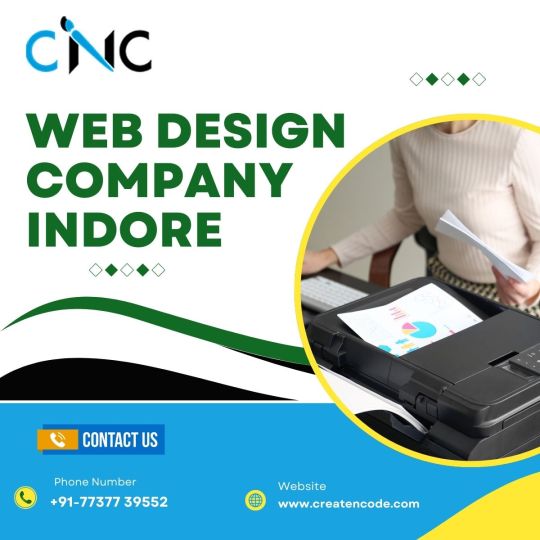
#Best Web hosting for Small Business Ecommerce#website#best website designing company in indore#website design#web design#web development#digital marketing#seo services#web design company
2 notes
·
View notes
Text
Front-End Development: Building the Interface of the Future
Front-end development is at the heart of creating user-friendly and visually appealing websites. It involves translating designs into code and ensuring that web applications are responsive and interactive. In this article, we explore the key aspects of front-end development, essential skills, and emerging trends in the field.
What is Front-End Development?
Front-end development focuses on the user interface (UI) and user experience (UX) aspects of web development. It involves creating the part of the website that users see and interact with, using a combination of HTML, CSS, and JavaScript.
Core Technologies
HTML (HyperText Markup Language): HTML is the foundation of web pages, defining the structure and content, such as headings, paragraphs, and images.
CSS (Cascading Style Sheets): CSS is used to style and layout web pages, controlling aspects like colors, fonts, and spacing to create an attractive and consistent look.
JavaScript: JavaScript adds interactivity and dynamic content to web pages, enabling features like form validation, animations, and user input handling.
Popular Frameworks and Libraries
React: A JavaScript library for building fast and dynamic user interfaces, particularly single-page applications.
Angular: A comprehensive framework for building large-scale applications with a structured and modular approach.
Vue.js: A flexible framework that is easy to integrate into projects and focuses on the view layer of applications.
The Role of a Front-End Developer
Turning Designs into Code
Front-end developers take designs created by UI/UX designers and turn them into code. This involves creating HTML for structure, CSS for styling, and JavaScript for functionality, ensuring the design is faithfully implemented and functional across various devices and browsers.
Ensuring Responsiveness
With the growing use of mobile devices, it’s crucial that websites work well on screens of all sizes. Front-end developers ensure that web applications are responsive, meaning they adapt smoothly to different screen resolutions and orientations.
Optimizing Performance
Performance optimization is key in front-end development. Developers reduce file sizes, minimize load times, and implement lazy loading for images and videos to enhance the user experience.
Maintaining Cross-Browser Compatibility
A successful front-end developer ensures that web applications work consistently across different browsers. This involves testing and resolving compatibility issues to provide a uniform experience.
Implementing Accessibility
Making web content accessible to people with disabilities is a critical aspect of front-end development. Developers adhere to accessibility standards and best practices to ensure that everyone can use the website effectively.
Essential Skills for Front-End Developers
Mastery of Core Technologies
Proficiency in HTML, CSS, and JavaScript is fundamental. Front-end developers must be able to write clean, efficient code that is both maintainable and scalable.
Familiarity with Modern Frameworks
Knowledge of modern frameworks like React, Angular, and Vue.js is crucial for building contemporary web applications. These tools facilitate the creation of complex, dynamic interfaces.
Version Control with Git
Version control systems like Git are essential for tracking changes in the codebase and collaborating with other developers. Mastery of Git allows for efficient project management and collaboration.
Understanding of UX/UI Design
An understanding of UX/UI principles helps developers create user-friendly and aesthetically pleasing interfaces. This includes knowledge of user behavior, usability testing, and design basics.
Problem-Solving and Debugging
Front-end development often involves troubleshooting issues related to layout, functionality, and performance. Strong problem-solving skills are essential to identify and resolve these challenges efficiently.
Emerging Trends in Front-End Development
Progressive Web Apps (PWAs)
PWAs combine the best features of web and mobile applications, offering fast loading times, offline capabilities, and push notifications. They provide a native app-like experience within the browser.
WebAssembly
WebAssembly allows developers to run high-performance code in web browsers. It enables complex applications like games and video editors to run efficiently on the web, expanding the possibilities of front-end development.
Server-Side Rendering (SSR)
Server-side rendering improves the loading speed of web pages and enhances SEO. Frameworks like Next.js (for React) facilitate SSR, making it easier to build fast and search-friendly applications.
Single Page Applications (SPAs)
SPAs load a single HTML page and dynamically update the content as users interact with the application. This approach provides a smoother user experience, similar to that of a desktop application.
Component-Based Development
Modern frameworks emphasize component-based architecture, where UI elements are built as reusable components. This modular approach enhances maintainability and scalability.
AI and Machine Learning Integration
Integrating AI and machine learning into front-end development enables the creation of smarter, more personalized applications. Features like chatbots, recommendation engines, and voice recognition can significantly enhance user engagement.
#FrontEndDevelopment#WebDevelopment#UIUXDesign#HTML#CSS#JavaScript#ReactJS#Angular#VueJS#ResponsiveDesign#WebDesign#UserExperience#WebPerformance#WebAccessibility#SinglePageApplication#ProgressiveWebApp#WebDevelopmentTrends#ModernWebDev#FrontendFrameworks#CodeNewbie#LearnToCode#WebDevCommunity#CodingLife#TechTrends#WebComponents#WebAssembly#ServerSideRendering#DigitalDesign#UIComponents#WebOptimization
3 notes
·
View notes
Text
Top 10 Front-End Frameworks and Libraries for 2024
As the web development landscape continues to evolve, staying updated with the latest front-end frameworks and libraries is crucial for any developer. Whether you're a seasoned pro or just starting out, knowing which tools to use can significantly impact your productivity and the quality of your projects. In this post, we’ll explore the top 10 front-end frameworks and libraries that are set to dominate in 2024.
1. React
React remains one of the most popular front-end libraries, known for its simplicity and flexibility.
Key Features of React
Component-Based Architecture: Reusable components make development efficient and manageable.
Virtual DOM: Enhances performance by minimizing direct DOM manipulation.
Strong Community Support: A vast ecosystem of tools, libraries, and tutorials.
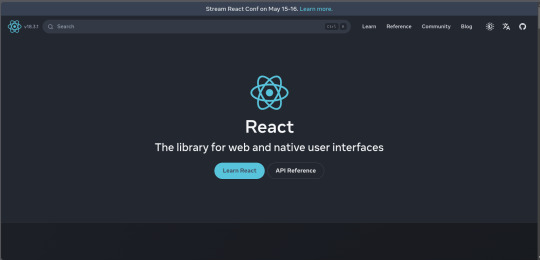
2. Angular
Angular, backed by Google, is a powerful framework for building dynamic single-page applications (SPAs).
Why Choose Angular?
Two-Way Data Binding: Synchronizes data between the model and the view.
Dependency Injection: Improves code maintainability and testability.
Comprehensive Documentation: Extensive resources for learning and troubleshooting.
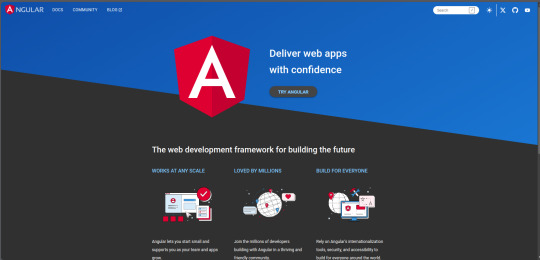
3. Vue.js
Vue.js has gained popularity due to its gentle learning curve and versatility.
Advantages of Vue.js
Reactive Data Binding: Simplifies state management.
Single-File Components: Encapsulate HTML, CSS, and JavaScript in one file.
Flexibility: Can be used for both large-scale and small-scale applications.
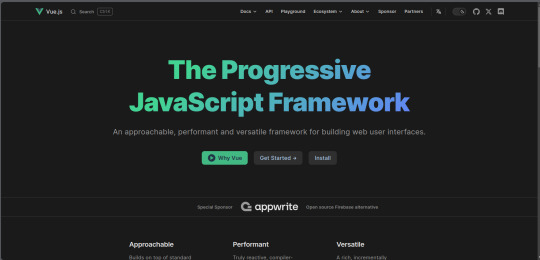
4. Svelte
Svelte is a relatively new player that compiles components into highly efficient vanilla JavaScript at build time.
Svelte’s Standout Features
No Virtual DOM: Directly manipulates the DOM for better performance.
Less Boilerplate: Cleaner code with minimal overhead.
Ease of Use: Intuitive and straightforward syntax.
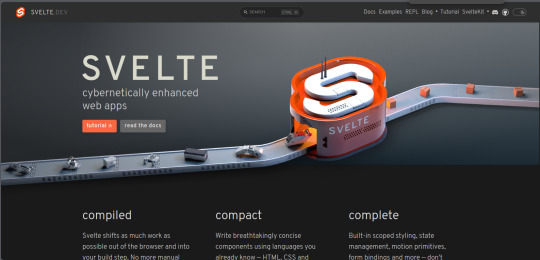
5. Bootstrap
Bootstrap is a front-end framework that provides pre-designed components and a responsive grid system.
Benefits of Using Bootstrap
Responsive Design: Ensures your site looks great on all devices.
Pre-Styled Components: Saves time with ready-to-use UI elements.
Customizable: Easily customize with Sass variables and Bootstrap’s extensive options.
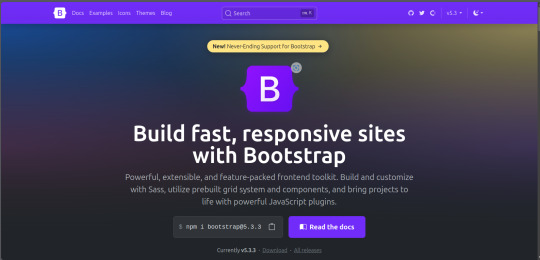
6. Tailwind CSS
Tailwind CSS is a utility-first CSS framework that allows for rapid UI development.
Tailwind CSS Features
Utility-First Approach: Use utility classes directly in your HTML.
Customizable: Extensive configuration options to suit your project’s needs.
Consistency: Enforces a consistent design language across your project.
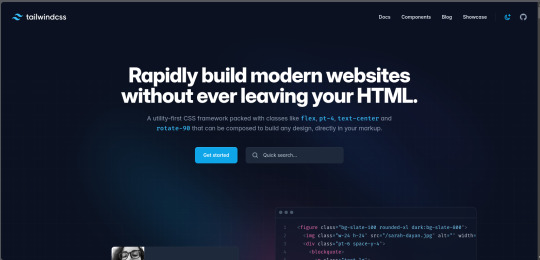
7. Ember.js
Ember.js is a robust framework for building ambitious web applications.
Why Ember.js Stands Out
Convention over Configuration: Reduces the amount of decision-making and boilerplate code.
Strong Routing: Powerful routing capabilities for managing application state.
Productivity: Focuses on developer productivity with built-in best practices.
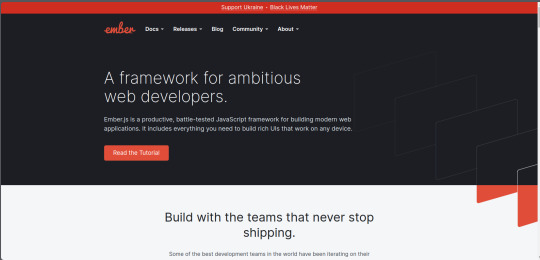
8. Alpine.js
Alpine.js offers a minimal and lightweight way to add interactivity to your websites.
Key Features of Alpine.js
Lightweight: Small footprint with only a few kilobytes.
Declarative Syntax: Similar to Vue.js, making it easy to understand and implement.
Ease of Integration: Can be easily integrated into existing projects.
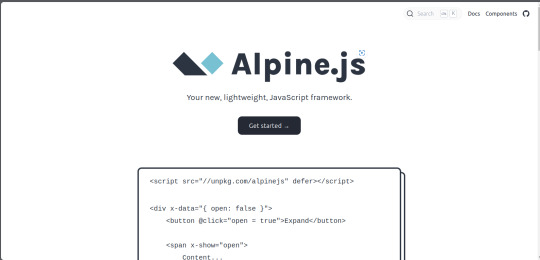
9. Next.js
Next.js is a popular React framework that enables server-side rendering and static site generation.
Benefits of Using Next.js
Server-Side Rendering (SSR): Improves performance and SEO by rendering pages on the server.
Static Site Generation (SSG): Pre-renders pages at build time for fast load times.
API Routes: Allows you to create API endpoints within your application.
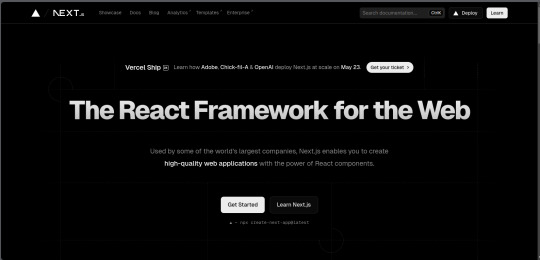
10. Lit
Lit is a simple library for building fast, lightweight web components.
Advantages of Lit
Web Components: Embraces the web components standard for reusable, encapsulated HTML elements.
Performance: Lightweight and highly performant.
Simple API: Easy to learn and use with a minimal API surface.
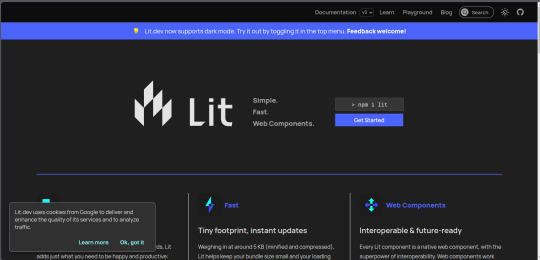
Conclusion
Choosing the right front-end framework or library can significantly impact your workflow and the quality of your projects. Whether you prefer the flexibility of React, the structure of Angular, or the simplicity of Svelte, there's a tool out there to suit your needs.
Final Tips for Selecting a Framework or Library
Project Requirements: Consider the specific needs of your project.
Community and Support: Look for frameworks with strong community support and documentation.
Learning Curve: Choose a tool that matches your current skill level and the time you have available to learn.
By staying informed about the latest tools and trends, you can ensure that your skills remain relevant and that you can deliver the best possible results in your projects. Happy coding!
Remember, the best tool is the one that helps you get the job done efficiently and effectively. So, dive into these frameworks and libraries, and take your front-end development skills to the next level!
Share Your Thoughts
I'm curious to know your thoughts on these front-end frameworks and libraries. Have you used any of them in your projects? Which one is your favorite, and why? Share your experiences and insights in the comments below.👇
2 notes
·
View notes
Text
20 Best Android Development Practices in 2023
Introduction:
In today's competitive market, creating high-quality Android applications requires adherence to best development practices. Android app development agencies in Vadodara (Gujarat, India) like Nivida Web Solutions Pvt. Ltd., play a crucial role in delivering exceptional applications. This article presents the 20 best Android development practices to follow in 2023, ensuring the success of your app development projects.

1. Define Clear Objectives:
Begin by defining clear objectives for your Android app development project. Identify the target audience, the app's purpose, and the specific goals you aim to achieve. This clarity will guide the development process and result in a more focused and effective application.
2. Embrace the Material Design Guidelines:
Google's Material Design guidelines provide a comprehensive set of principles and guidelines for designing visually appealing and intuitive Android applications. Adhering to these guidelines ensures consistency, enhances usability, and delivers an optimal user experience.
3. Optimize App Performance:
Performance optimization is crucial for user satisfaction. Focus on optimizing app loading times, minimizing network requests, and implementing efficient caching mechanisms. Profiling tools like Android Profiler can help identify performance bottlenecks and improve overall app responsiveness.
4. Follow a Modular Approach:
Adopting a modular approach allows for easier maintenance, scalability, and code reusability. Breaking down your app into smaller, manageable modules promotes faster development, reduces dependencies, and enhances collaboration among developers.
5. Implement Responsive UI Designs:
Designing a responsive user interface (UI) ensures that your app adapts seamlessly to various screen sizes and orientations. Utilize Android’s resources, such as ConstraintLayout, to create dynamic and adaptive UIs that provide a consistent experience across different devices.
6. Prioritize Security:
Android app security is of paramount importance. Employ secure coding practices, authenticate user inputs, encrypt sensitive data, and regularly update libraries and dependencies to protect your app against vulnerabilities and potential attacks.
7. Opt for Kotlin as the Preferred Language:
Kotlin has gained immense popularity among Android developers due to its conciseness, null safety, and enhanced interoperability with existing Java code. Embrace Kotlin as the primary programming language for your Android app development projects to leverage its modern features and developer-friendly syntax.
8. Conduct Thorough Testing:
Testing is crucial to ensure the reliability and stability of your Android applications. Employ a combination of unit testing, integration testing, and automated UI testing using frameworks like Espresso to catch bugs early and deliver a robust app to your users.
9. Optimize Battery Consumption:
Battery life is a significant concern for Android users. Optimize your app's battery consumption by minimizing background processes, reducing network requests, and implementing efficient power management techniques. Android's Battery Optimization APIs can help streamline power usage.
10. Implement Continuous Integration and Delivery (CI/CD):
Adopting CI/CD practices facilitates frequent code integration, automated testing, and seamless deployment. Tools like Jenkins and Bitrise enable developers to automate build processes, run tests, and deploy app updates efficiently, resulting in faster time-to-market and improved quality.
11. Leverage Cloud Technologies:
Integrating cloud technologies, such as cloud storage and backend services, can enhance your app's scalability, performance, and reliability. Services like Firebase offer powerful tools for authentication, database management, push notifications, and analytics.
12. Ensure Accessibility:
Make your Android app accessible to users with disabilities by adhering to accessibility guidelines. Provide alternative text for images, support screen readers, and use colour contrast appropriately to ensure inclusivity and a positive user experience for all users.
13. Optimize App Size:
Large app sizes can deter users from downloading and installing your application. Optimize your app's size by eliminating unused resources, compressing images, and utilizing Android App Bundles to deliver optimized APKs based on device configurations.
14. Implement Offline Support:
Provide offline capabilities in your app to ensure users can access essential features and content even when offline. Implement local caching, synchronize data in the background, and notify users of limited or no connectivity to deliver a seamless user experience.
15. Implement Analytics and Crash Reporting:
Integrate analytics and crash reporting tools, such as Google Analytics and Firebase Crashlytics, to gain insights into user behaviour, identify areas for improvement, and address crashes promptly. This data-driven approach helps in refining your app's performance and user engagement.
16. Keep Up with Android OS Updates:
Stay up to date with the latest Android OS updates, new APIs, and platform features. Regularly update your app to leverage new functionalities, enhance performance, and ensure compatibility with newer devices.
17. Provide Localized Versions:
Cater to a global audience by providing localized versions of your app. Translate your app's content, user interface, and notifications into different languages to expand your user base and increase user engagement.
18. Ensure App Store Optimization (ASO):
Optimize your app's visibility and discoverability in the Google Play Store by utilizing appropriate keywords, engaging app descriptions, compelling screenshots, and positive user reviews. ASO techniques can significantly impact your app's download and conversion rates.
19. Follow Privacy Regulations and Guidelines:
Adhere to privacy regulations, such as GDPR and CCPA, and ensure transparent data handling practices within your app. Obtain user consent for data collection, storage, and usage, and provide clear privacy policies to establish trust with your users.
20. Regularly Update and Maintain Your App:
Continuously monitor user feedback, track app performance metrics, and release regular updates to address bugs, introduce new features, and enhance user experience. Regular maintenance ensures that your app remains relevant, competitive, and secure.
Conclusion:
Adopting these 20 best Android development practices in 2023 will help Android app development companies in India, create exceptional applications. By focusing on objectives, embracing Material Design, optimizing performance, and following modern development approaches, your Android apps will stand out in the market, delight users, and achieve long-term success. Also by partnering with an Android App Development Company in India (Gujarat, Vadodara) you can leverage their expertise.
#Android App development company in India#Android App development agencies in India#Android App development companies in India#Android App development company in Gujarat#Android App development company in Vadodara#Android App development agencies in Vadodara#Android App development agencies in Gujarat#Android App development companies in Vadodara#Android App development companies in Gujarat
7 notes
·
View notes
Text
Future Trends in Ruby on Rails Web Development

In the ever-evolving landscape of web development, Ruby on Rails (RoR) continues to be a popular and powerful framework for building robust, scalable, and efficient web applications. As technology advances and market demands evolve, the future of Ruby on Rails web development holds exciting possibilities and trends that promise to shape the way developers approach projects. In this article, we delve into the emerging trends and innovations in ruby on rails development company, highlighting the role of leading ruby on rails development companies, particularly those in the USA, in driving innovation and pushing the boundaries of what is possible in web development.
Embracing Modern JavaScript Frameworks:
As JavaScript frameworks like React, Vue.js, and AngularJS gain prominence in the web development landscape, Ruby on Rails developers are increasingly integrating these technologies into their projects. By leveraging the strengths of both Ruby on Rails and modern JavaScript frameworks, developers can create dynamic and interactive user interfaces that enhance the overall user experience. Ruby on Rails development companies in the USA are at the forefront of this trend, leveraging their expertise to seamlessly integrate JavaScript frameworks into RoR applications and deliver cutting-edge solutions to clients.
Microservices Architecture and Scalability:
With the growing complexity of web applications and the need for scalability and flexibility, the adoption of microservices architecture is becoming increasingly prevalent in Ruby on Rails web development. By breaking down monolithic applications into smaller, independent services, developers can achieve greater scalability, fault isolation, and agility. Leading ruby on rails web development companies in the USA are embracing microservices architecture to build scalable and resilient applications that can easily adapt to changing business requirements and user demands.
Progressive Web Applications (PWAs):
Progressive Web Applications (PWAs) represent a significant trend in web development, offering the benefits of both web and mobile applications. By leveraging modern web technologies, including service workers, web app manifests, and responsive design principles, developers can create PWAs that deliver a fast, reliable, and engaging user experience across devices and platforms. Ruby on Rails development companies in the USA are leveraging the flexibility and power of RoR to build PWAs that combine the best features of native mobile apps with the reach and accessibility of the web.
AI-Powered Applications and Chatbots:
Artificial intelligence (AI) and machine learning (ML) technologies are increasingly being integrated into web applications to enhance functionality and user experience. In Ruby on Rails web development, AI-powered applications and chatbots are becoming more prevalent, providing personalized recommendations, automated customer support, and intelligent decision-making capabilities. ruby on rails development company usa are leveraging AI and ML technologies to build sophisticated and intelligent web applications that anticipate user needs and deliver tailored experiences.
Serverless Architecture and Function as a Service (FaaS):
Serverless architecture is revolutionizing the way web applications are built and deployed, offering greater scalability, cost-efficiency, and flexibility. With the rise of Function as a Service (FaaS) platforms like AWS Lambda and Google Cloud Functions, developers can focus on writing code without worrying about managing servers or infrastructure. Leading ruby on rails development companies in the USA are embracing serverless architecture to build lightweight, event-driven applications that can scale seamlessly in response to fluctuating workloads and user demand.
Augmented Reality (AR) and Virtual Reality (VR) Experiences:
The integration of augmented reality (AR) and virtual reality (VR) technologies into web applications is opening up new possibilities for immersive and interactive user experiences. In Ruby on Rails web development, developers are exploring ways to incorporate AR and VR features into e-commerce platforms, educational portals, and entertainment websites. Ruby on Rails web development companies in the USA are at the forefront of this trend, leveraging RoR's flexibility and versatility to build immersive AR and VR experiences that push the boundaries of traditional web development.
Conclusion:
As technology continues to evolve and market demands shift, the future of Ruby on Rails web development holds immense potential for innovation and growth. By embracing emerging trends such as modern JavaScript frameworks, microservices architecture, progressive web applications, AI-powered applications, serverless architecture, and AR/VR experiences, ruby on rails web development company usa are poised to lead the way in shaping the next generation of web applications. With their expertise, creativity, and commitment to excellence, these companies are driving innovation and pushing the boundaries of what is possible in Ruby on Rails web development.
#ruby on rails development company#ruby on rails development company usa#ruby on rails web development company usa
2 notes
·
View notes
Text
Elevate Your Online Presence with the Best Web Development Company in the USA - Decorosoft
In today's digital age, having a strong online presence is crucial for businesses to thrive. Your website serves as the digital storefront for your brand, often making the first impression on potential customers. Therefore, investing in professional web development is essential to create a compelling and user-friendly website that reflects your brand identity and values. When it comes to choosing the best web development company in USA, look no further than Decorosoft.
At Decorosoft, we pride ourselves on being a leading web development company, dedicated to helping businesses elevate their online presence and achieve their goals. With years of experience and a team of skilled professionals, we specialize in delivering bespoke web solutions that are tailored to meet the unique needs of our clients.
Here are a few reasons why Decorosoft stands out as the best web development company in the USA:
Expertise and Experience: With years of experience in the industry, Decorosoft has established itself as a trusted name in web development. Our team comprises seasoned professionals who possess expertise in various programming languages, frameworks, and technologies. Whether you need a simple brochure website or a complex e-commerce platform, we have the skills and knowledge to bring your vision to life.
Customized Solutions: We understand that every business is unique, and therefore, we believe in offering customized solutions tailored to our clients' specific requirements. Our web development process begins with a thorough analysis of your business objectives, target audience, and competitors. Based on this information, we create a custom strategy to design and develop a website that aligns with your brand identity and goals.
User-Centric Design: At Decorosoft, we prioritize user experience (UX) design to ensure that your website not only looks great but also functions seamlessly across all devices. We employ best practices in UX design to create intuitive navigation, clear calls-to-action, and engaging content that keeps visitors hooked and encourages them to explore further. By putting the user first, we help you create a positive impression and foster long-term relationships with your audience.
Responsive and Mobile-Friendly: With the increasing use of smartphones and tablets, having a mobile-friendly website is no longer optional – it's a necessity. That's why all websites developed by Decorosoft are responsive and optimized for mobile devices. Whether your visitors are browsing on a desktop, laptop, smartphone, or tablet, they will enjoy a seamless and consistent experience across all platforms.
SEO-Friendly: A beautiful and functional website is of little use if it cannot be found by your target audience. That's why we pay special attention to search engine optimization (SEO) during the web development process. From optimizing site structure and metadata to creating high-quality content and building backlinks, we employ proven SEO strategies to improve your website's visibility and rankings on search engine results pages (SERPs).
Ongoing Support and Maintenance: Our relationship with clients doesn't end after the website is launched. We provide ongoing support and maintenance services to ensure that your website remains secure, up-to-date, and performing at its best. Whether you need to make updates, fix bugs, or add new features, our team is here to help you every step of the way.
In conclusion, Decorosoft is the best web development company in USA for businesses looking to elevate their online presence and achieve success in the digital world. With our expertise, experience, and commitment to excellence, we deliver customized web solutions that drive results and exceed expectations. Partner with Decorosoft today and take your business to new heights online.
2 notes
·
View notes